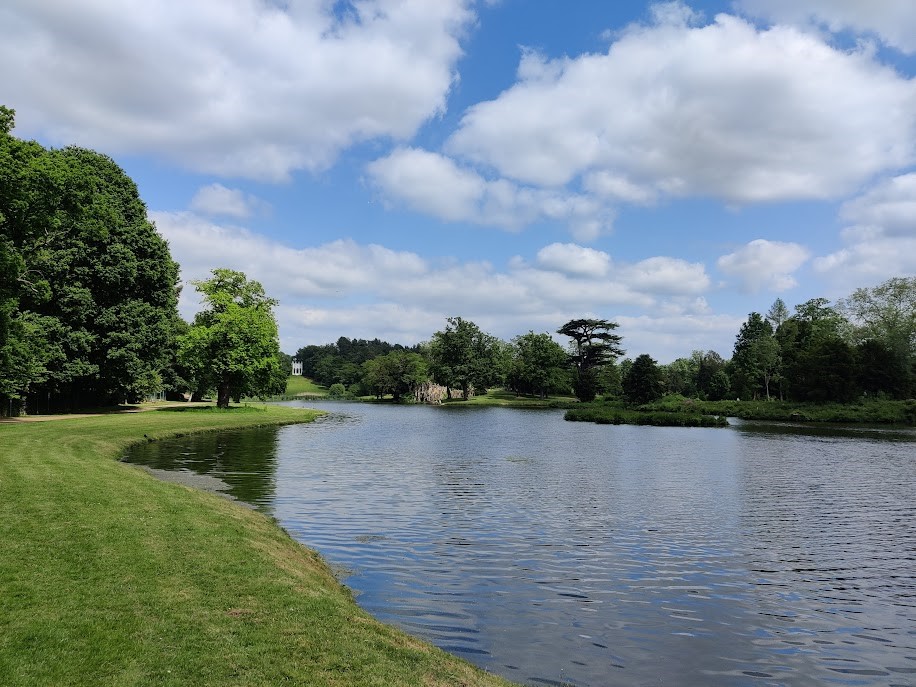The Gardens Trust is marking the 40th Anniversary of the 1983 national Heritage Act and the statutory measure to set up a Register of Parks and Gardens of Special Historic Interest, a world -first in recognising the cultural importance of garden and landscape design and the need to protect it. At the core of this celebration was our Historic Landscape Designation conference held on 12th October, as part of our annual Historic Landscape Assemblies season.
Demonstrating the level of interest in the subject, tickets sold out rapidly, with almost 90 people attending in person and another 30 online. This was our first full hybrid event, and an experience that we hope to repeat again in future! The day began with a conversation between some of the key figures involved in setting up the Register back in the 1980s: David Jacques, English Heritage’s first Inspector of Historic Parks and Gardens; Peter Goodchild, who was one of the original advocates for protection and a national register; and David Lambert, who was the Garden History Society’s Conservation Officer. The three of them discussed how the idea of a national Register evolved, the preparation of early lists and key influencers in securing the key clause in the 1983 Act, and putting the new Register into practice in development applications. We were delighted that many of the Register Inspectors and contributors from the 1980s and 90s joined us at the conference and online, bringing both a glow of reunion, and many voices of experience to the discussion.
Bringing us quickly back to the present, Erika Diaz Petersen, Historic England’s Principal National Landscape Adviser, then spoke about how the Register was further developed, the current approach to the assessment of parks and gardens for registration, and how the toolbox of other designations can be used to protect sites and their settings. Erika discussed Historic England’s role in conserving registered sites and talked about her own work in looking ahead at changes such as Biodiversity Net Gain, green infrastructure and the role of historic designed landscapes in nature recovery and climate change adaptation.
Buckinghamshire Gardens Trust volunteer Claire de Carle talked about the community’s role using Buckinghamshire Local List pilot project as an example. We heard how the County Gardens Trust volunteer researchers approached the project, and saw some of the sites that made it onto the list: an Arts & Crafts-style garden, a museum garden, an arboretum and a mid-19th century cemetery. There is further research on other sites underway.
Gardens Trust Volunteer Support Officer Tamsin McMillan talked about the other contributions made by community groups to designation, such as providing material to the Historic Environment Records required by the National Planning Policy Framework, and adding detail to the national Heritage List via the Missing Pieces project.
Deborah Evans, a historic landscape consultant and Gardens Trust trustee and Conservation Committee member shared her user experience of the Register focusing on two Derbyshire planning cases to illustrate the challenges of protecting historic designed landscapes in practice. William Hanham, owner of Deans Court, and Ben Cowell of Historic Houses discussed the benefits of registration but also the need for a flexible system that respects good stewardship and allows creativity.
Chris Blandford is Gardens Trust Vice-Chair and also President of World Heritage UK, so he was able to talk to us about how World Heritage Sites (WHS) are designated, as a comparison with the Register. Many registered sites are of international significance and there are many historic parks and gardens (registered or un-registered) included in World Heritage Sites. Chris touched on the clause in the Levelling Up and Regeneration Bill to ‘level up’ the statutory status of World Heritage Sites and registered parks and gardens.
This conference was planned to also open a discussion about what changes the sector should be seeking, in collaboration with owners and other organisations, in order to ensure the conservation of designed landscape heritage. There was a lively panel discussion at the end of the day, with David Jacques, Deborah Evans, David McDonald, Chair of the Institute of Historic Building Conservation, and Deborah Mays, heritage consultant and former Head of Listing Strategy at Historic England. Responding to the day’s discussions, all agreed the value of being prepared to seize opportunities to enhance the conservation of historic parks and gardens as happened in the run up to the 1983 Act. There are protection measures to explore and discuss with Historic Houses, the other national amenity societies and others. An education strategy and more guidance on potential harm to sites was needed too. The first step might be to take stock of the Register coverage and its effectiveness akin to the ‘The Future of the National Heritage List for England: A view from the Amenity Sector’ (the Saunders’ Report) which focused on listed buildings.
The Gardens Trust plans to explore the day’s discussion further. Watch this space!



